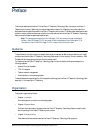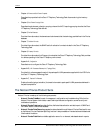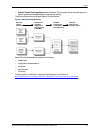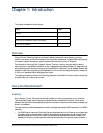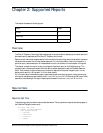
Chapter 1: Introduction
Netcool/Proviso Cisco IP Telephony Technology Pack User’s Guide, Version 4.3-W 3
CME Operation
The CME is designed to work with data that is gathered over the space of one hour. Within that hour, there are
several distinct phases that characterize the operation of the CME:
• Loading Phase
• Building Phase
• Processing Phase
• Output Phase
Loading Phase
During the beginning of each hour, the CME creates a new network configuration model based on the inventory
structure that exists in the database at that time. This model is used as a snapshot of the network environment
and serves as the basis for all metric processing for the entire duration of the hour. At the end of the hour, the
CME polls the database for any changes that have been made to the inventory and creates a new network
configuration model for the next hour.
As the CME reloads its configuration hourly, any metrics produced by sub-elements following the last polling
period are rejected by the CME until the beginning of the next hour.
Building Phase
Once the current configuration model has been built, the CME creates a table of sub-elements and metrics that
are expected for the current hour. The CME uses the RIDs and MIDs to build the table and determine which
metrics should be arriving from the collectors. The table also specifies how resources are related, and determines
if there are any CME formulas that must be applied to a sub-element’s metrics once the data is gathered.
Processing Phase
Whenever new data arrives at the CME, it is evaluated and stored in the appropriate table location, along with any
Resource Aggregation information. Once the input and processing dependencies for a metric in the table have
been met, the CME processes the metrics and stores the data until the end of the hour.
Output Phase
At the end of the current hour, the CME outputs everything in memory to the Hourly and Daily Loaders. The
data sent to the database loaders includes the sorted data for the current hour, and resource and group
aggregations for each of the processing periods up to the current time. The Hourly Loader computes group and
resource aggregations, while the Daily Loader creates metric statistics and inserts the data into the database.
How is the Data Reported?
The data collected, processed, and stored in the database by Netcool/Proviso is organized and output for
customers using reporter sets that are designed by developers and Professional Services personnel for a specific
Technology Pack.





